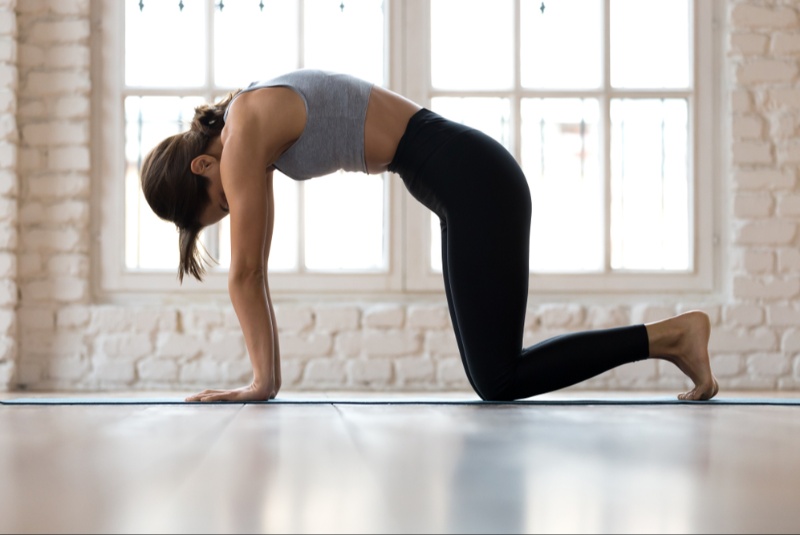Maintaining good posture is a dynamic process that involves not only awareness but also targeted exercises to strengthen key muscle groups. The following exercises are specifically designed to improve posture by targeting muscles that support the spine and promote alignment.
1. Plank Variations: Core Strengthening
- Exercise: Traditional Plank, Side Plank, and Reverse Plank
- How to: Start with a traditional plank by holding a push-up position with your arms straight. Engage your core, keep your back straight, and hold for 30 seconds to a minute. Switch to side planks, balancing on one arm and the side of one foot. Finish with a reverse plank, facing upwards with your weight on your arms and heels.
- Benefits: Planks engage the core muscles, including the abdominals, obliques, and lower back, promoting stability and reducing the risk of slouching.
2. Bridge Exercise: Activating Glutes and Lower Back Muscles
- Exercise: Bridge Pose
- How to: Lie on your back with your knees bent and feet hip-width apart. Lift your hips towards the ceiling, engaging your glutes and lower back. Hold for 20-30 seconds, lower, and repeat.
- Benefits: The bridge exercise targets the glutes and lower back, essential for maintaining the natural curve of the spine and preventing lower back pain.
3. Cat-Cow Stretch: Improving Spinal Flexibility
- Exercise: Cat-Cow Stretch
- How to: Start on your hands and knees, with your wrists directly under your shoulders and knees under your hips. Inhale as you arch your back, dropping your belly towards the floor (Cow Pose). Exhale as you round your spine, tucking your chin to your chest (Cat Pose). Repeat for 10 cycles.
- Benefits: The cat-cow stretch enhances flexibility in the spine, improving posture and reducing stiffness in the back.

4. Wall Angels: Shoulder Blade Activation
- Exercise: Wall Angels
- How to: Stand with your back against a wall and your feet about six inches away. Press your lower back into the wall. Bring your arms up to shoulder height, elbows bent at 90 degrees. Slide your arms up the wall, keeping your elbows and wrists in contact. Bring them back down and repeat for 10 reps.
- Benefits: Wall angels activate the muscles between the shoulder blades, promoting proper shoulder alignment and preventing the rounding of the upper back.
5. Chest Opener Stretch: Countering Forward Hunching
- Exercise: Chest Opener Stretch
- How to: Stand with your feet hip-width apart. Clasp your hands behind your back and straighten your arms. Lift your arms slightly, opening your chest. Hold for 20-30 seconds, feeling a stretch across the chest.
- Benefits: This stretch counteracts the forward hunching often associated with poor posture, promoting an open and upright chest.
6. Child's Pose: Relaxing the Lower Back and Neck
- Exercise: Child's Pose
- How to: Start on your hands and knees, then sit back on your heels, reaching your arms forward on the floor. Lower your chest towards the floor and relax your neck. Hold for 30 seconds to a minute.
- Benefits: Child's pose stretches and relaxes the lower back and neck, relieving tension and promoting spinal alignment.
7. Chin Tucks: Neck Strengthening
- Exercise: Chin Tucks
- How to: Sit or stand with your shoulders relaxed. Slowly and gently tuck your chin towards your chest, feeling a slight stretch at the base of your skull. Hold for a few seconds and return to the neutral position. Repeat for 10 reps.
- Benefits: Chin tucks strengthen the muscles in the neck and upper back, reducing strain caused by forward head posture.
8. Hip Flexor Stretch: Loosening Tight Hips
- Exercise: Hip Flexor Stretch
- How to: Kneel on your right knee with your left foot in front, forming a 90-degree angle. Shift your weight forward, feeling a stretch in the front of your right hip. Hold for 20-30 seconds and switch sides.
- Benefits: Stretching the hip flexors helps maintain pelvic alignment, preventing excessive arching of the lower back.
9. Seated Leg Lifts: Core Activation and Hip Flexor Stretch
- Exercise: Seated Leg Lifts
- How to: Sit on the edge of a sturdy chair with your feet flat on the floor. Straighten one leg in front of you, hold for a few seconds, and lower it back down without letting it touch the floor. Repeat for 10 reps on each leg.
- Benefits: Seated leg lifts engage the core and stretch the hip flexors, contributing to better posture by strengthening the muscles that support your spine.
10. Thoracic Extension: Mobilizing the Upper Back
- Exercise: Thoracic Extension
- How to: Sit or stand with your hands clasped behind your head. Gently arch your upper back, lifting your chest towards the ceiling. Hold for a few seconds, then return to the neutral position. Repeat for 10 reps.
- Benefits: This exercise targets the upper back, promoting mobility and countering the effects of slouching, especially if you spend extended hours sitting.
11. Quadruped Limb Raises: Stability for the Lower Back
- Exercise: Quadruped Limb Raises
- How to: Start on your hands and knees. Lift your right arm straight forward and your left leg straight back, keeping your back flat. Hold for a few seconds, then lower them back down. Repeat on the opposite side. Continue alternating for 10 reps on each side.
- Benefits: Quadruped limb raises strengthen the muscles surrounding the lower back, promoting stability and preventing excessive arching.
Incorporate these exercises into your regular routine to strengthen key muscle groups, enhance flexibility, and promote overall spinal health. Remember to consult with a healthcare professional or fitness expert before starting a new exercise regimen, especially if you have pre-existing health conditions or concerns.
ADVERTISEMENT




